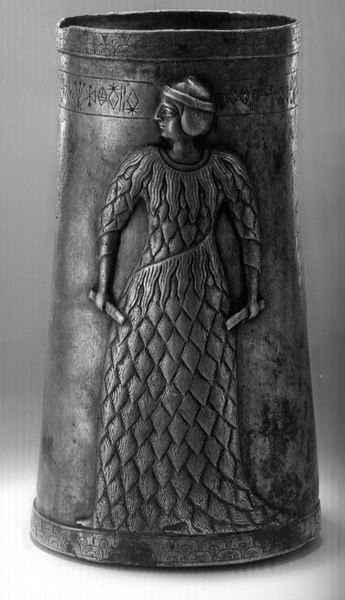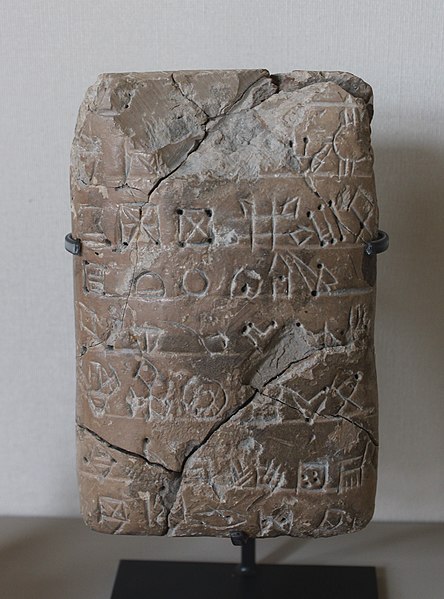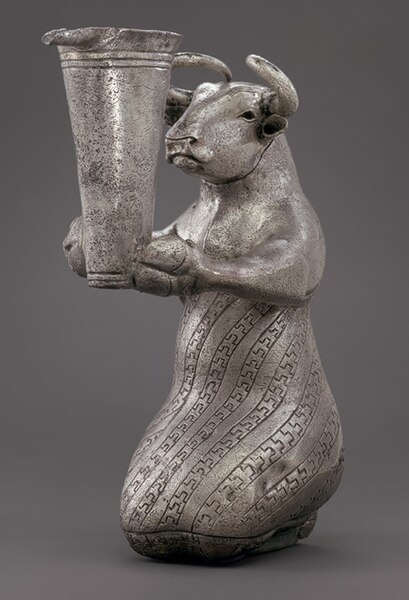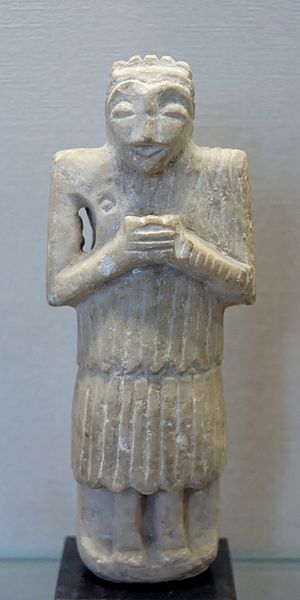Linear Elamite was a writing system used in Elam during the Bronze Age between c. 2300 and 1850 BCE, and known mainly from a few extant monumental inscriptions. It was used contemporaneously with Elamite cuneiform and records the Elamite language. The French archaeologist François Desset and his colleagues have argued that it is the oldest known purely phonographic writing system, although others, such as the linguist Michael Mäder, have argued that it is partly logographic.
Standard reconstruction of the development of writing, and position of Linear Elamite as derived from Proto-Elamite in the geographical area of Elam.
Silver cup (item Q) from Marvdasht, Fars, with Linear-Elamite inscription on it, from the 3rd millennium BCE and kept in the National Museum of Iran. According to Desset et al., the inscription reads "For the Lady of Marapsha (toponym), (named) Shuwar-asu, I made this silver vase. In the Temple that will be known by my name, Humshat, I dedicated it with goodwill for you."
Clay cone with Linear Elamite text, dated to the reign of Puzur-Inshushinak. Louvre Museum Sb 17830.
Clay tablet with Linear Elamite text. Louvre Museum Sb 9382.
Elam (; Linear Elamite: hatamti; Cuneiform Elamite: 𒁹𒄬𒆷𒁶𒋾 ḫalatamti; Sumerian: 𒉏𒈠 elam; Akkadian: 𒉏𒈠𒆠 elamtu; Hebrew: עֵילָם ʿēlām; was an ancient civilization centered in the far west and southwest of modern-day Iran, stretching from the lowlands of what is now Khuzestan and Ilam Province as well as a small part of southern Iraq. The modern name Elam stems from the Sumerian transliteration elam , along with the later Akkadian elamtu, and the Elamite haltamti. Elamite states were among the leading political forces of the Ancient Near East. In classical literature, Elam was also known as Susiana, a name derived from its capital Susa.
Kneeling Bull with Vessel. Kneeling bull holding a spouted vessel, Proto-Elamite period, (3100–2900 BC)
Proto-Elamite (Susa III) cylinder seal, 3150–2800 BC. Louvre Museum, reference Sb 6166
Silver cup with linear-Elamite inscription on it. Late 3rd millennium BC. National Museum of Iran.
Orant figure, Susa IV, 2700–2340 BC.







